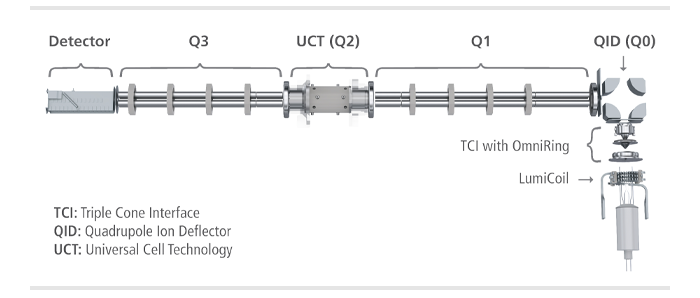How to Bring a Better ICP-MS to Market (and Win a Few Awards)
The NexION® 5000 multi-quadrupole ICP-MS won an R&D 100 Award, recognizing it as, “One of the 100 most technologically significant new products of the year in the analytical/test category.” The R&D 100 Awards recognize the most promising new products, processes, materials, or software developed throughout the world and introduced to the market the previous year.
We sat down with ICP-MS Portfolio Director Fadi Abou-Shakra and discussed the NexION® 5000 and how PerkinElmer developed the ICP-MS system, the first of its kind to have four stages of mass resolution.
Q: What motivated the team to develop the NexION 5000?
A: There were definitely a combination of motivations, but for me, I remember meeting with one customer who was using two different ICP-MS instruments, but neither could detect potassium in the way they needed to. That customer need was one we could meet that no one else was offering-and with that push, we were able to get the ball rolling to start up our project.
Q: What makes the NexION 5000 special?
A: This instrument can accurately measure elements at the sub-parts-per-trillion level—and that’s impressive. When you’re trying to detect something at such low levels, small interferences become significant.
Our unique reaction technology in the NexION 5000 is how we address the interference problem-and we do it differently than our competitors who use higher order multipoles designed for collision technology instead.

Q: Were there any roadblocks during development?
A: The biggest roadblock was definitely the COVID-19 pandemic. Instrument development is a very meticulous and skilled process, and in this case, one that demands our scientists use cleanrooms to do much of their work. That is skilled labor and in pre-pandemic circumstances, we would have our expert scientists travel to help with that work, but it wasn’t possible at the time. Also, our R&D facility is in Canada and our manufacturing facility is in the US-and we couldn’t cross the border when we normally would during the process.
Everyone stepped up to the plate-figuring out who could be in the lab when, who had the skills to do certain tasks, working remotely with each other. Usually there are interactions between R&D and manufacturing that happen in person, but of course that had to be done online.
We also needed to train the service engineers and get their feedback on the instrument-from both local and global teams. We had to rapidly adjust the way we performed much of the development, and with great coordination, it was carried out almost seamlessly.
Q: How many people worked to create this instrument?
A: There were over 50 people from several departments who helped in the development and the launch of the NexION 5000. It was most definitely a global team effort-there were, of course, folks from R&D, software engineering, technical support, manufacturing, and application support, as well as service engineers and buyers that worked hard during COVID to ensure the timely supply of parts, plus project and product management as well as commercialization, including marketing.
I’m very proud of the innovation we’ve achieved. I know the R&D team had a clear picture of their goal and they were able to realize it-that deserves recognition.
Q: Any surprises along the way?
A: The biggest surprise for me came after launch where we saw interest from a multitude of fields. We typically think of semiconductor manufacturers and their associated chemical suppliers when we think of customers who need such a sensitive ICP-MS, but several other markets were interested as well.

We’ve already had customers from many research institutes working in environmental, food, and nanoparticle research purchase the NexION 5000 as it is able to uniquely address the challenges they face with their application.
Q: What are the customers saying?
A: All positive feedback from our customers-that the NexION 5000 definitely delivers on the detection capabilities that we promise: a multi-quadrupole system that provides the best ion beam control within this instrument class and is capable of suppressing and eliminating spectral interferences found in complex samples, ensuring exceptional background equivalent concentrations (BECs) and outstanding detection limits in both hot and cold plasma conditions.

